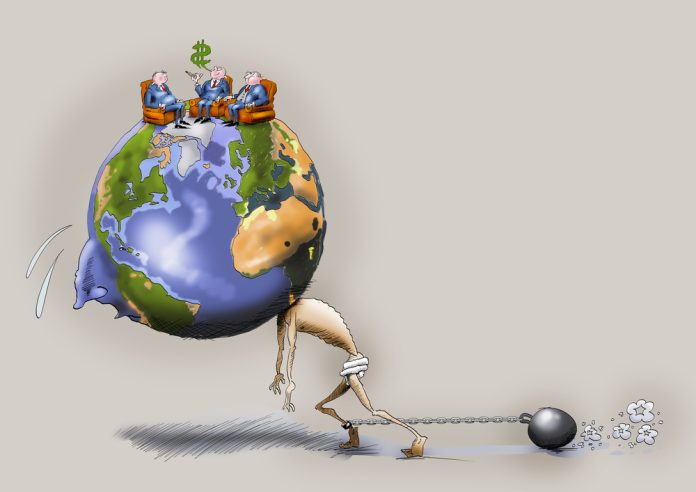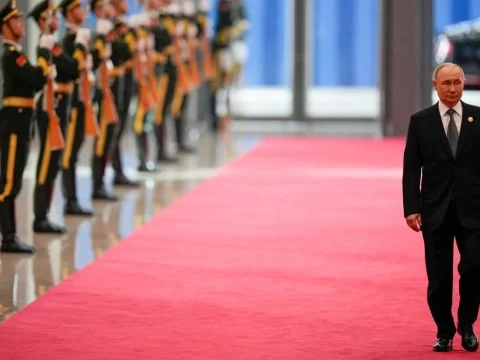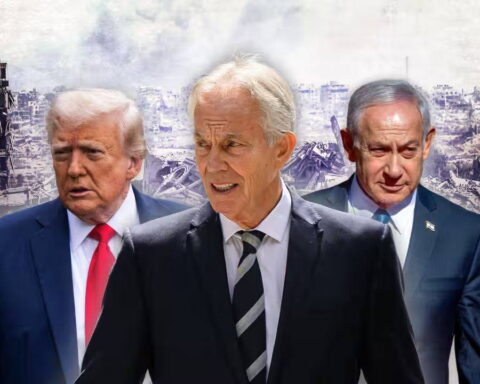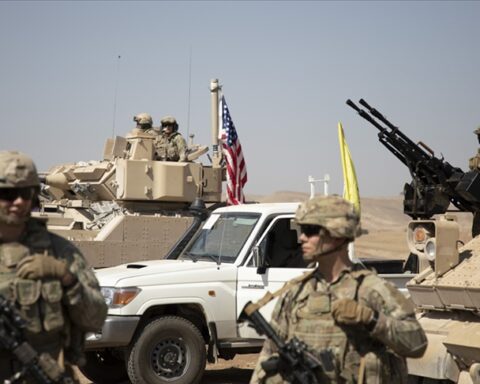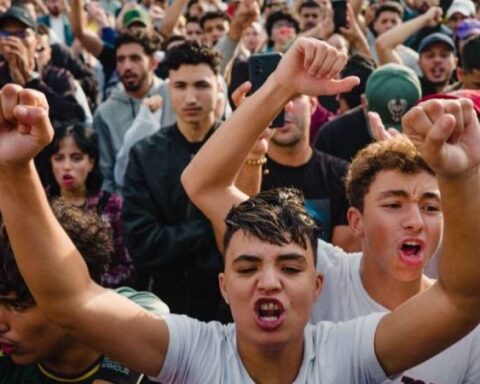The United States’ withdrawal from its international role will not result in global collapse, argues Amitav Acharya. Instead, we are on the verge of a ‘multiplex’ order, in which ‘re-globalization’ is led by Asia and Global South nations increasingly deploy non-alignment to get what they want.
As Donald Trump rampages through the global economic system with his tariff war and throws the United States’ commitment to NATO into serious doubt, fears – even panic – are mounting about the collapse of world order. Part of the anxiety stems from how suddenly these changes appear to have unfolded. In the aftermath of the 2008 global economic crisis, what was often described as the US-led liberal international order seemed alive and well, though not without challenges.
Leading liberal internationalists believed not only that US primacy would endure, but that the world order it built would, in the words of the Princeton professor John Ikenberry, ‘survive and thrive’, and co-opt even its challengers, like China. Now, Trump’s second presidency gives fresh ammunition to the argument that he is destroying not only the liberal order, but the very notion of world order itself. It would be a mistake, however, to see things in such extremes.
As I argued when he first entered the White House, Trump is not creating this crisis – he is accelerating forces that had already undermined the old order. Yet, any new order emerging from the present crisis will retain some features of the old. For now, some comfort is to be found in the fact that no other country is as yet emulating Trump’s ‘reciprocal tariffs’ or supporting his contempt for multilateralism.
Globalization, too, is not disappearing, but taking a new, eastern turn. Traditional forms of global governance were already growing rusty. Now they are being joined by new forms which will become more salient in the post-Trump era. Global governance, however, is not going to disappear or be radically altered.
Beyond the West
Let’s start by challenging the assumption that the fate of world order depends on the US and western global dominance. Many of the key ideas underpinning world order – and the rules and institutions sustaining it – have come from a range of nations and regions, not just the West. These principles include the independence and territorial integrity of states, free trade and freedom of the seas, diplomacy and peace treaties, and moral values and humanitarian norms. Neither the decline of the West nor America’s withdrawal alters this historical reality.
Moreover, these realities have also shaped the post-Second World War international order, many of whose foundational and progressive elements – economic openness, international cooperation and humanitarian values – were developed with active leadership beyond the West.
While the western contributions were critical, so too were those of the Global South, which, beyond larger nations such as India, South Africa and Indonesia, has been both a contributor to and upholder of the norms and institutions at the heart of the world order. For example, a majority of Global South nations condemned the Russian invasion of Ukraine, despite the abstentions by China and India; they have also been even more outspoken than western nations in condemning Israeli actions in Gaza, increasingly being seen as ‘genocide’.
So what kind of world order might avoid global chaos and how might it arise? The default answer from policymakers, media and think tanks is ’multipolarity’ – a distribution of military and economic power across several major states. Yet this concept does not capture the role of ideas, norms and leadership, some of which come from non-great powers. Nor does multipolarity’s European history before the Second World War fit neatly into the 21st century context. In that era, the main players were western imperial powers, colonizing most non-western nations, with few multilateral institutions globally or regionally and no nuclear weaponry to temper rivalry and war among major powers.
A broader way to frame the emerging world order is multiplexity, which has three defining features. First, no single nation, or cluster of powers, will dominate. The US is likely to remain the most powerful nation, especially militarily, financially and technologically. But China will become pre-eminent in development and trade, if not in financial power. The European Union will remain a force in regulating trade and ecological threats.
Regional powers, acting through regional bodies, such as Indonesia in ASEAN and South Africa in the African Union, could become more important in managing political, security and trade affairs. These need not be limited to BRICS members but include states such as Mexico, Nigeria and Turkey.
Second, power and alignments in a multiplex world will be issue- and time-specific. Countries will avoid rigid alliances and instead ‘hedge’ or avoid taking sides in great power rivalries. As Malaysian analyst Elina Noor observes about Southeast Asia’s response to US–China rivalry, states may favour one power on a specific issue at a given moment but still enjoy solid ties with another in different though sometimes related areas. For example, countries might receive economic and infrastructure aid from China yet look to the US and its allies for security.
The tendency towards a more non-aligned foreign policy will grow. For this reason, I don’t believe the idea of a return of the great power sphere of influence is credible. Third, no single nation will lead across every issue area. For example, as already stated, while the US might retain security allies, China might dominate as a trading partner; the EU could shape climate rules; while the Global South nations will draw security, economic, technological and public health support from a variety of partners – from the UK, Germany, India, Turkey, South Africa, Brazil and Saudi Arabia, depending on issue areas. In so doing the Global South may be able to exert great agency over what they get and how.
Re-globalization, not de-globalization
A multiplex world order would shape globalization and global cooperation differently than multipolarity or the passing era of western dominance. Globalization is a much older and broader phenomenon than is recognized in the conventional ‘Davos view’, which traces it back to the invention of the steam engine and economic changes in the 19th century. In fact, there have been many globalizations. These include the Eurasian Silk Roads and the vast non-Sinic Indian Ocean commercial and cultural networks that lasted from antiquity to the arrival of European imperial powers and linked Europe, Africa, Asia and the Middle East.
The era of hyper-globalization – when it was celebrated as a guarantor of prosperity and peace – is past, ended by the weaponization of trade and geopolitics. This has led to calls for de-globalization by decreasing reliance on foreign trade and attaining more national self-reliance – but also for re-globalization. In the multiplex world, such re-globalization will be led less by the West than by the East, especially Asia.
Asia is regarded not only as the centre of global growth, but as a new ‘global connector’. The region accounted for 57 per cent of global GDP growth between 2015 and 2021 and 42 per cent of world GDP (at purchasing power parity). Asia also accounts for more than half of global trade, and its intra-regional trade is second only to the European Union, representing 57 per cent of its total trade in 2022.
Trump’s tariff wars may yet undercut Asia’s growth, since a good deal of Asia’s economic rise was built on access to the American market. There will be new winners and losers. Countries too dependent on exports to the US – such as Vietnam, Korea, Taiwan, Mexico and the EU – are particularly vulnerable. Yet this does not mean the ‘end of globalization’, as some have said, but rather that it is entering a new phase.
The infrastructure and policy regimes built up by Asian nations such as Vietnam, Malaysia and Bangladesh to support their growth and trade will still be useful as countries adapt to the new global trade reality. And new supply chains, which are more localized, minimalist and virtual, will emerge, responding not just to the changing geopolitics and the Trump tariffs but other factors such as automation, sustainability concerns and technological advances.
China is already developing supply chains less dependent on the US and which target markets in the Global South more directly. This re-globalization could enhance the agency and economic potential of Global South nations that remain relatively non-aligned. A recent Economist Group survey found that a non-aligned strategic position increases a country’s attraction to global investors. While US tariffs might complicate this hedging posture, they are unlikely to prevent diversification. Indeed they might encourage South–South globalization.
End of the West vs the Rest
A multiplex world undercuts the idea of the West vs the Rest divide. Trump has dealt a powerful, possibly terminal blow to the idea of the West by questioning NATO, but also by imposing ‘reciprocal tariffs’ on US friends and rivals alike. As Ursula von der Leyen, the President of the European Commission, put it in April: ‘The West as we knew it no longer exists.’ This need not be bad for world order, as it opens up new avenues of cooperation that cut across the West–Rest divide. This multiplexity has major implications for traditional ways of organizing global cooperation, groupings and institutions.
Exclusive groups such as the G7 will become obsolete, if not extinct, unless they expand and adapt. This does not mean that groups of non-western nations, such as the much-hyped BRICS+, will take over multilateralism. While the BRICS bloc has symbolic importance, there are internal rivalries, such as China and India’s, the likely divergence of Indonesia and Egypt from China’s agenda and the question of what resources new, wealthier members such as the United Arab Emirates will commit to the grouping.
Nonetheless, the BRICS+ as well as regional and ‘minilateral’ groupings could provide non-Western nations avenues for global influence, as could be seen in China’s assertion of its geopolitical heft when Xi Jinping brought together Vladimir Putin, Narendra Modi and Kim Jong Un, among other leaders, at the recent Tianjin Summit of the Shanghai Cooperation Organization.
Students of multilateralism have increasingly recognized that the United Nations, 80 years old this autumn, is no longer the only game in town when it comes to organizing global cooperation and governance. Yet traditional multilateralism is not dead. It is important to note that the UN is a vast and complex system, not a singular entity.
While some institutions, such as the World Trade Organization, may be moribund, specialized agencies such as the International Monetary Fund and Unesco are still going to matter in managing financial crises and cultural preservation. And potential remains for repurposing: for example, a greater visibility and role for the General Assembly as the Security Council remains polarized and ineffective.
Meanwhile hybrid forms of cooperation – between governments and private agencies, corporations, foundations and NGOs – are increasingly important. Fruitful examples include the Gates Foundation in global health, the Forest Stewardship Council, the Internet Corporation for Assigned Names and Numbers, and the Colombian Climate and Agricultural Sector.
Trump may continue to bully states into bilateral trade deals favouring the US; but other bilateral, minilateral and regional arrangements will persist, often complementing multilateral cooperation. There is no reason to discount the possibility that the norms of multilateralism, reciprocity, humanitarian assistance and environmental protection, though weakened, would survive and could be revived and strengthened post-Trump.
International cooperation might move to a ‘world-minus-one’ mode where more multilateral deals will emerge without US participation while leaving the door open for its return after Trump. Trumpism would also encourage western nations to seek out more trade partners in the Global South as we have seen with the UK–India trade agreement.
Amid the gloom that marks much thinking about world order today, it is useful to recognize that it is not ending but changing. Short of a nuclear catastrophe, a new international order will emerge on the back of the old, with important differences to correct its failings, but also with continuities.
One shouldn’t fall victim to the self-fulfilling prophecy that the world order will collapse because the US has gone rogue. Instead, take into consideration the forces not just of disruption and chaos but also of continuity and consensus, and explore the possibilities, in the words of 14th-century historian Ibn Khaldun, to witness the ‘world brought into existence anew’.
Amitav Acharya’s new book ‘The Once and Future World Order: Why Global Civilization Will Survive the Decline of the West’ is available now (Basic Books, £25)
Power, principles and peace beyond the West
The dawn of state relations
A network of independent states and the principle of territorial integrity – the foundation of the modern world order – first emerged in Sumer, in what is now Iraq, around 2500 BC, well before Greece, Maya, India and Europe. The first multipolar system involving the major powers of a region – the ‘Amarna system’ – which kept peace through diplomacy, communications and norms of reciprocity, originated a millennium later in the ancient Near East among Egypt, Hatti, Assyria, Babylon and Mitanni. Records survive for the Amarna system and for the first peace treaty; the latter has matching texts from each side and was concluded in 1259 BC between Egypt and Hatti. It provided for non-aggression, non-interference in internal affairs and mutual support against common threats.
The emergence of ‘just war’ conventions
Ancient India’s ‘just war’ humanitarian principles took shape around the first century AD, anticipating the Geneva Conventions nearly two millennia later. They included protection of civilians and non-combatants, injured or surrendered soldiers and prohibition against poisonous weapons. The rules were meant to regulate unlawful combat, protect the rights of civilians and non-combatants, reduce the intensity of violence and destruction in war, and improve the prospects for rebuilding war-devastated areas.
The first rules-based trade
The foundations of economic interdependence were laid in the Indian Ocean, not by empire but by private traders and small port-city states of Indian, Chinese, Arab, Javanese, African and other origins. The Indian Ocean system was open, rules-based and the world’s largest maritime trading network until the arrival of European powers in the 16th century AD. It brought prosperity, fuelled by spice and textile – especially cotton – trade and was sufficiently lucrative to attract European predatory attention. At the same time, the pre-established nodes of the Indian Ocean network enabled European voyagers and companies to acquire knowledge and advance colonization.
The post-Second World War multilateral system
It is often overlooked that 30 of the 50 countries that participated in the San Francisco Conference to draft the United Nations charter were from what is known today as the Global South – excluding China, South Africa and Turkey but including India and the Philippines, which attended as colonies of Britain and the US respectively. Post-colonial nations advanced self-determination beyond the selective and fledgling European norms, introduced racial equality and contributed to universal human rights, as well as institutions to promote economic development, free trade, disarmament and peacekeeping.

